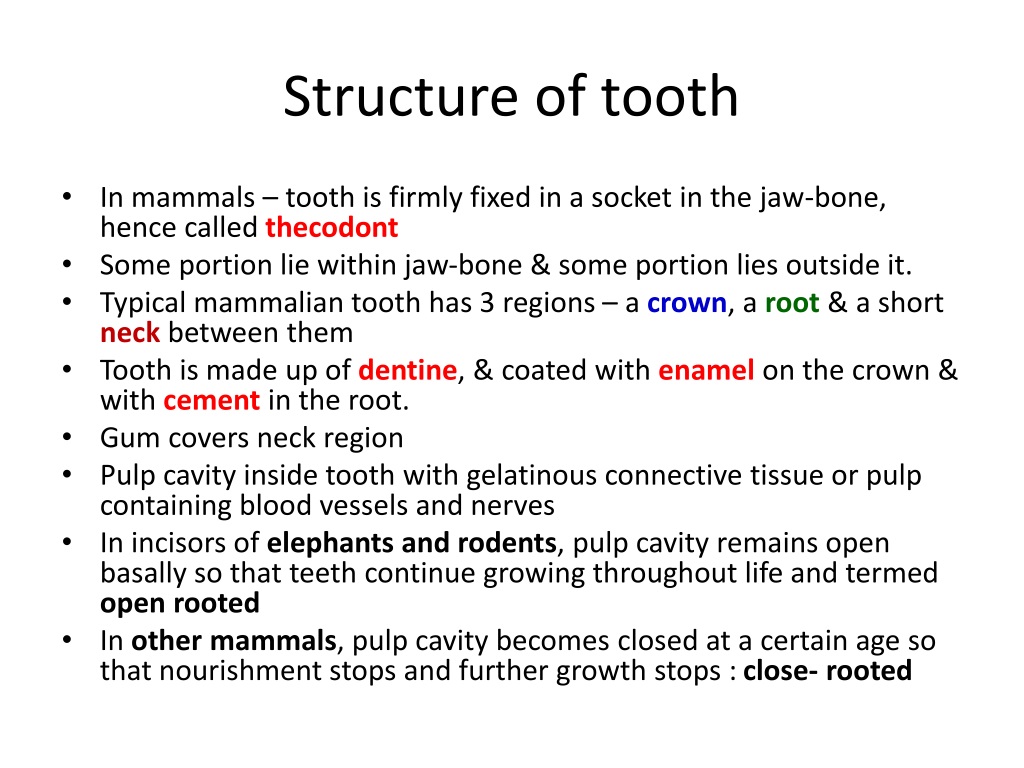
PPT Dentition in mammals PowerPoint Presentation, free download ID9288225
This type of dentition is found among mammals. In this condition, the teeth are lodged in bony sockets of the jaw bone, Capillaries and nerves enter the jaw bone and the pulp cavity through the open tips of the hollow roots. This is a peg and socket attachment with the help of cementum that surrounds the root portion of the tooth.

PPT Dentition in mammals PowerPoint Presentation, free download ID9288225
Open in figure viewer PowerPoint. Formation of the dental lamina in Monodelphis domestica. a,b:. This study is the first study of gene expression patterns in the complete dentition of a mammal with a fully heterodont dentition, and provides critical information about the generation of dental diversity. First, we show that the role of many of.

PPT Dentition in mammals PowerPoint Presentation, free download ID9288225
Photograph of a dog skull with the left maxillary and mandibular permanent teeth numbered according to the modified Triadan system. Dogs have 42 permanent teeth (12 incisors, 4 canines, 16 premolars, and 10 molars). The incisors (101-103, 201-203, 301-303, 401-403) and canine teeth (104, 204, 304, 404) are single rooted.
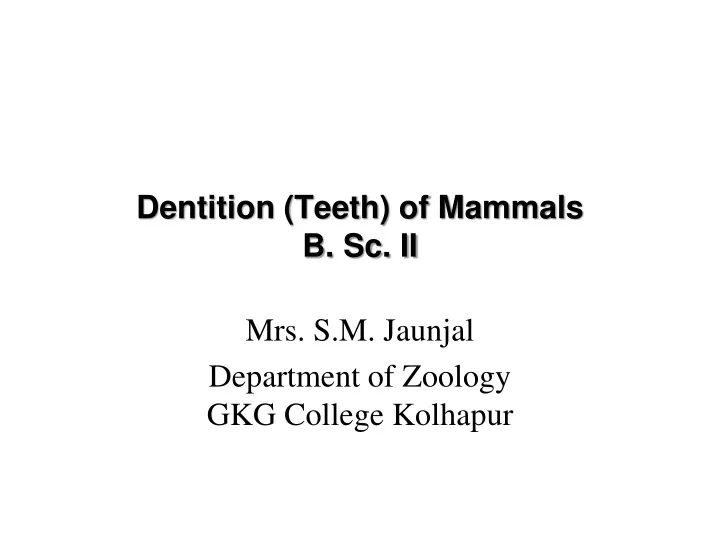
PPT Dentition (Teeth) of Mammals B. Sc. II PowerPoint Presentation, free download ID9623863
DENTITION IN MAMMALS The study of arrangement structure and number of types of teeth collectively is called as dentition. Teeth are present in the foetal as well as in adults of mammals, based on the presence of teeth Mammals are two types.

PPT Common Requirements of living things ANIMALS Chapter 5 PowerPoint Presentation ID
Worn mandibular cheek teeth of various mammals (top) and mesowear evident on upper cheek teeth in side view (bottom). The musk deer is a browser, and the vicuña is a grazer. Lower teeth modified.
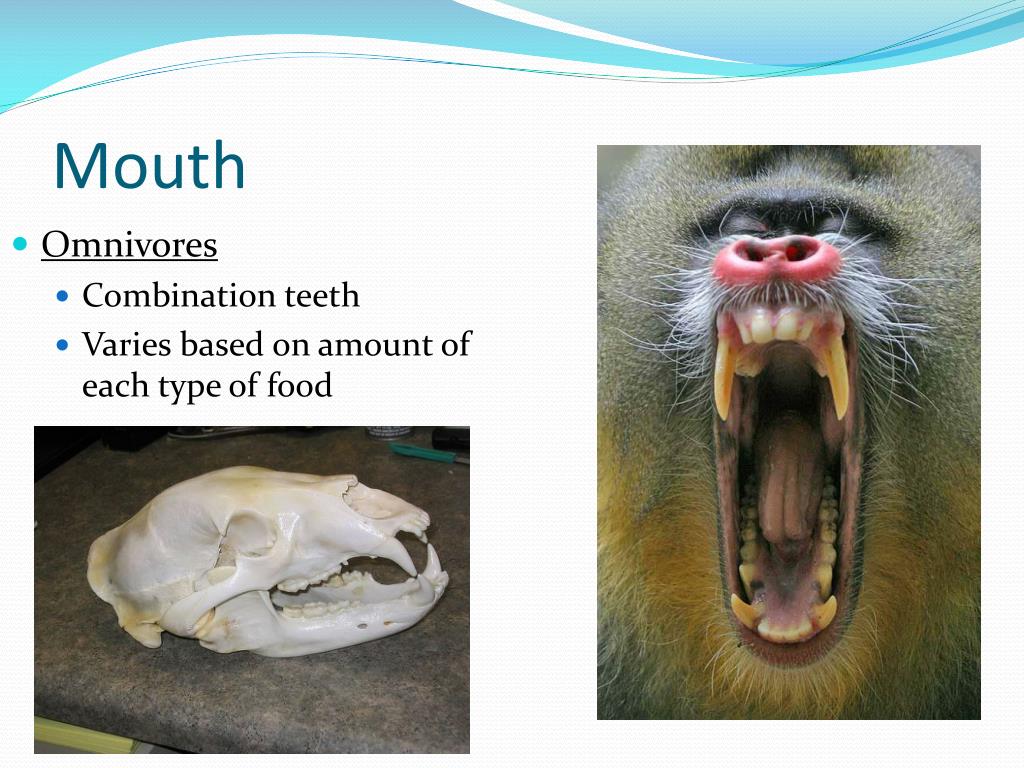
Omnivore Dentition
(a) Tríconodowt: fossíL Mesozoíc mammals. 3 cones ave arranged a stvaíeht Líne. TRICONOOONT fossil mamma's three cones Premolars have two roots and two cucps. Molars generaLLu have more than two roots and severab cucps. carnívores, bast premolars and first molars Lower are cabled carnassíab teeth. híeherpríncates (man),
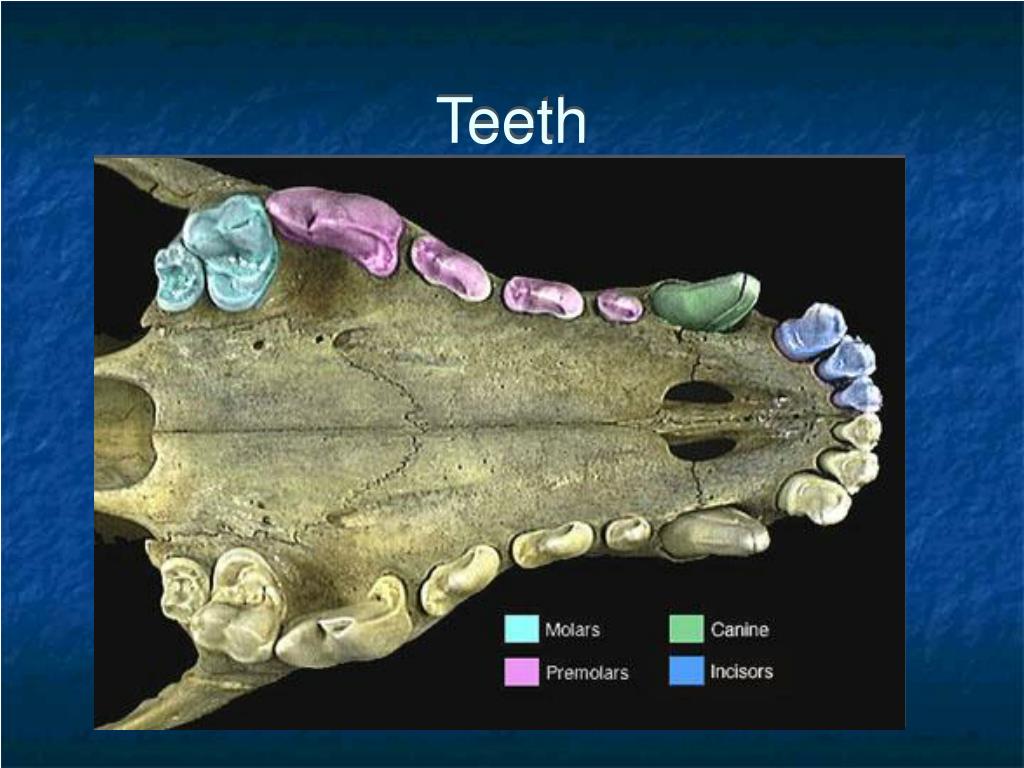
PPT Mammals PowerPoint Presentation, free download ID1194728
9. Permanence or replaceable teeth • Monophyodont -Some mammals such as platypus, marsupials, moles, sirenians, cetaceans (toothless whales), etc., only one set of teeth develops. • Diphyodont (most mammals) » Two sets of teeth in life history » 1st set - deciduous/lacteal/milk teeth • They erupt usually after birth (in guinea pigs & bat, they form and shed even before birth.
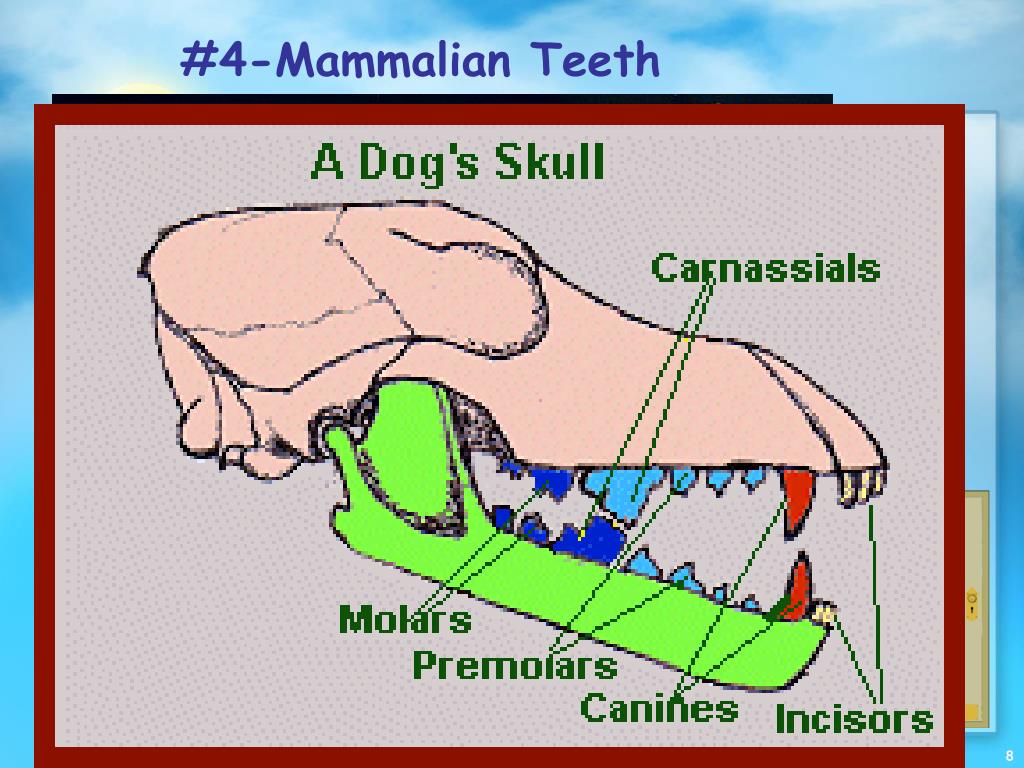
PPT Mammals PowerPoint Presentation, free download ID2109577
Two main types of evolutionary change can be detected: (a) retardation of the gradient in the molar region, so that some mammals have more molariform teeth than others; (6) shifting of the molar region backwards and forwards along the dentition. 4. The upper molar patterns of Cenozoic mammals are considered to be of four types-zalambdodont.

PPT Outline PowerPoint Presentation, free download ID1425980
Dentition in Mammals | Vertebrates | Chordata | Zoology Article shared by: In this article we will discuss about the dentition in mammals with the help of a suitable diagram. Teeth and Dentition: The hard and usually pointed structures connected to the jaw bones in the buccal cavity of vertebrates are known as teeth.

PPT Teeth PowerPoint Presentation, free download ID1924144
Dentition : the arrangement of teeth in upper and lower jaw Most specialized in mammals Teeth present in all mammals except in Platypus & Whale bone whales (teeth absent in adult condition). Download Presentation teeth molar tooth fossil mammals pulp cavity called carnassial teeth called wisdom tooth erruption greend Download Presentation

PPT Teeth PowerPoint Presentation, free download ID1924144
Dentition in mammals Mar 4, 2021 • 0 likes • 758 views Download Now Download to read offline Science Dentition types in mammals. Teeth structure. Functions and types of teeth. Rabbit skull and dentition. Typical mammal dentition Aleena Elizabeth Cyril Research Scholar in Zoology Recommended Dentition in mammals.pptx AmatiRonald

PPT Dentition (Teeth) of Mammals B. Sc. II PowerPoint Presentation, free download ID9623863
Dentition | PPT Dentition Feb 9, 2017 • 11 likes • 10,948 views Download Now Download to read offline Education Structural arrangement of teeth is known as dentition. Dental Formula, Dentition in Herbivores Dentition in Carnivores Dentition in Omnivores Arrangement of teeth Ahmad Raza Student at G.C.University Faisalabad Follow Recommended
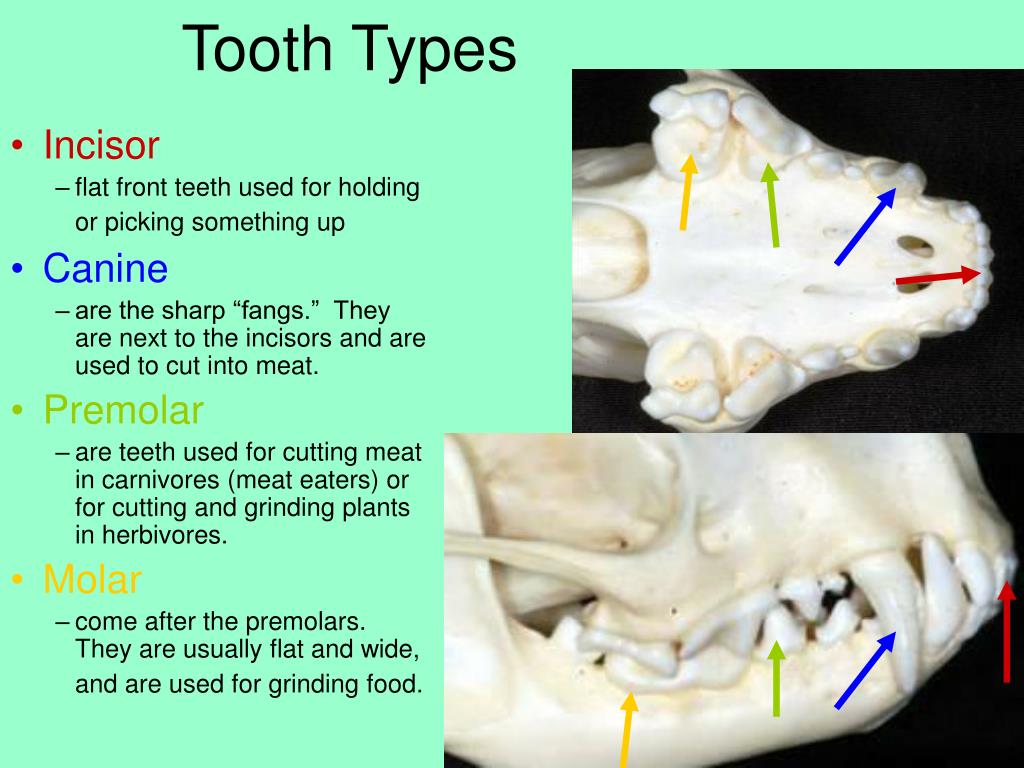
PPT Mammal Teeth and Skulls Adaptations and Identification PowerPoint Presentation ID4031452
View Dentition In Mammals PPTs online, safely and virus-free! Many are downloadable. Learn new and interesting things. Get ideas for your own presentations. Share yours for free!
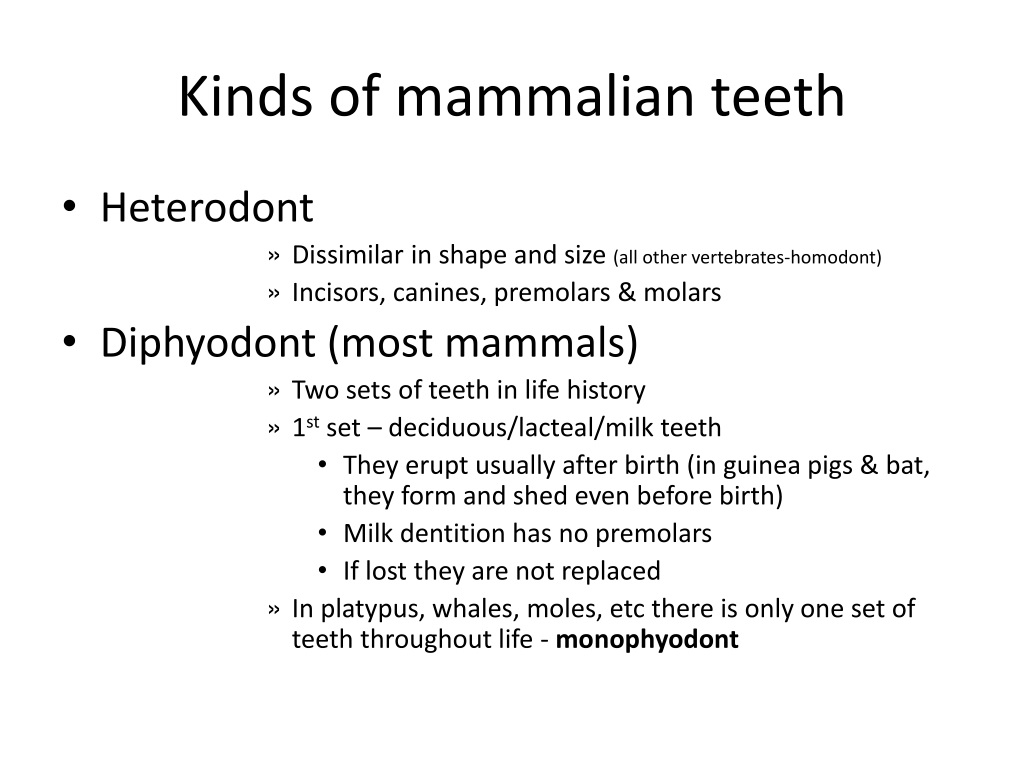
PPT Dentition in mammals PowerPoint Presentation, free download ID9288225
Thecodont type dentition is the rule among mammals. In this condition, the teeth are lodged in bony sockets or alveoli of the jaw bone and capillaries and nerves enter the pulp cavity through the open tips of the hollow roots (Fig. 10.128). Except mammals, thecodont type of teeth is found in crocodiles and in some fishes (Haddock, Garpike and.
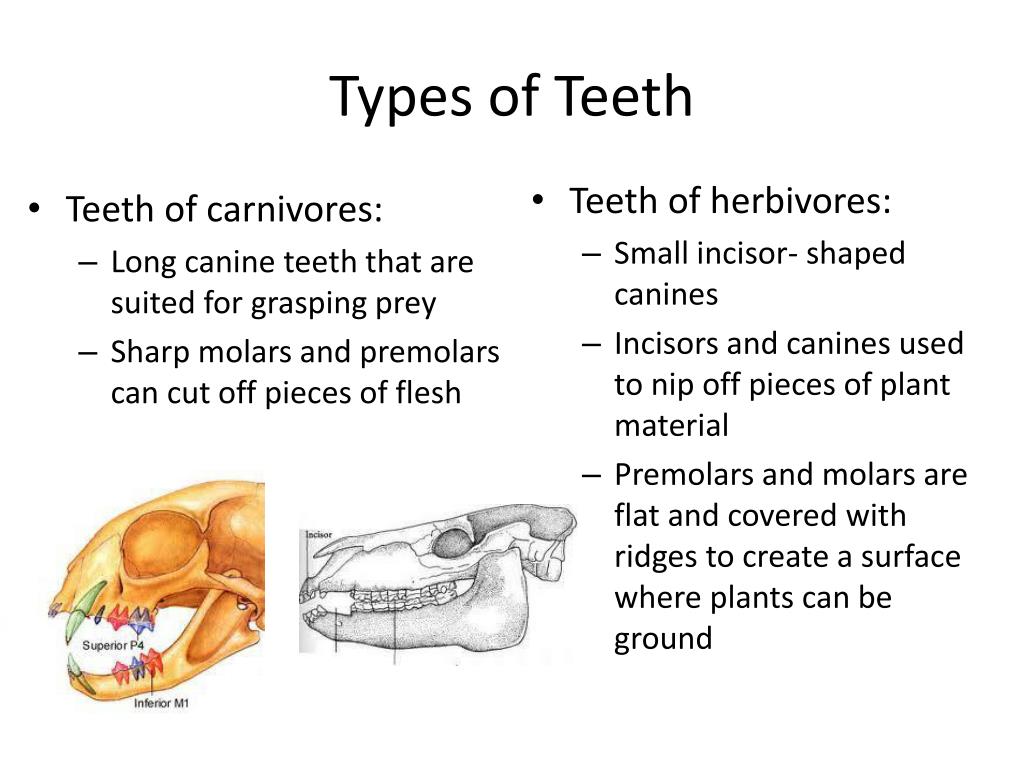
PPT Characteristics of Mammals PowerPoint Presentation, free download ID6838556
Most mammals, humans included, develope distinctive classes of teeth that are regionally specialized. We will discuss classes of teeth in the next unit. Anodontia is the developmental absence of teeth. Among mammals, the whalebone whale and the anteater are toothless; their ancestors had teeth. In humans, anodontia is a pathological condition.

PPT Mammals!!! PowerPoint Presentation, free download ID1938784
Thecodont and heterodont dentition differentiated into small peg like incisors, elongated canines, and cusped molars. iv. The quadrate of the skull and the articular of the lower jaw forms a joint, but both of them are reduced in size, thus, indicating the beginning of craniostylic jaw suspension of the mammals. 12. 13.